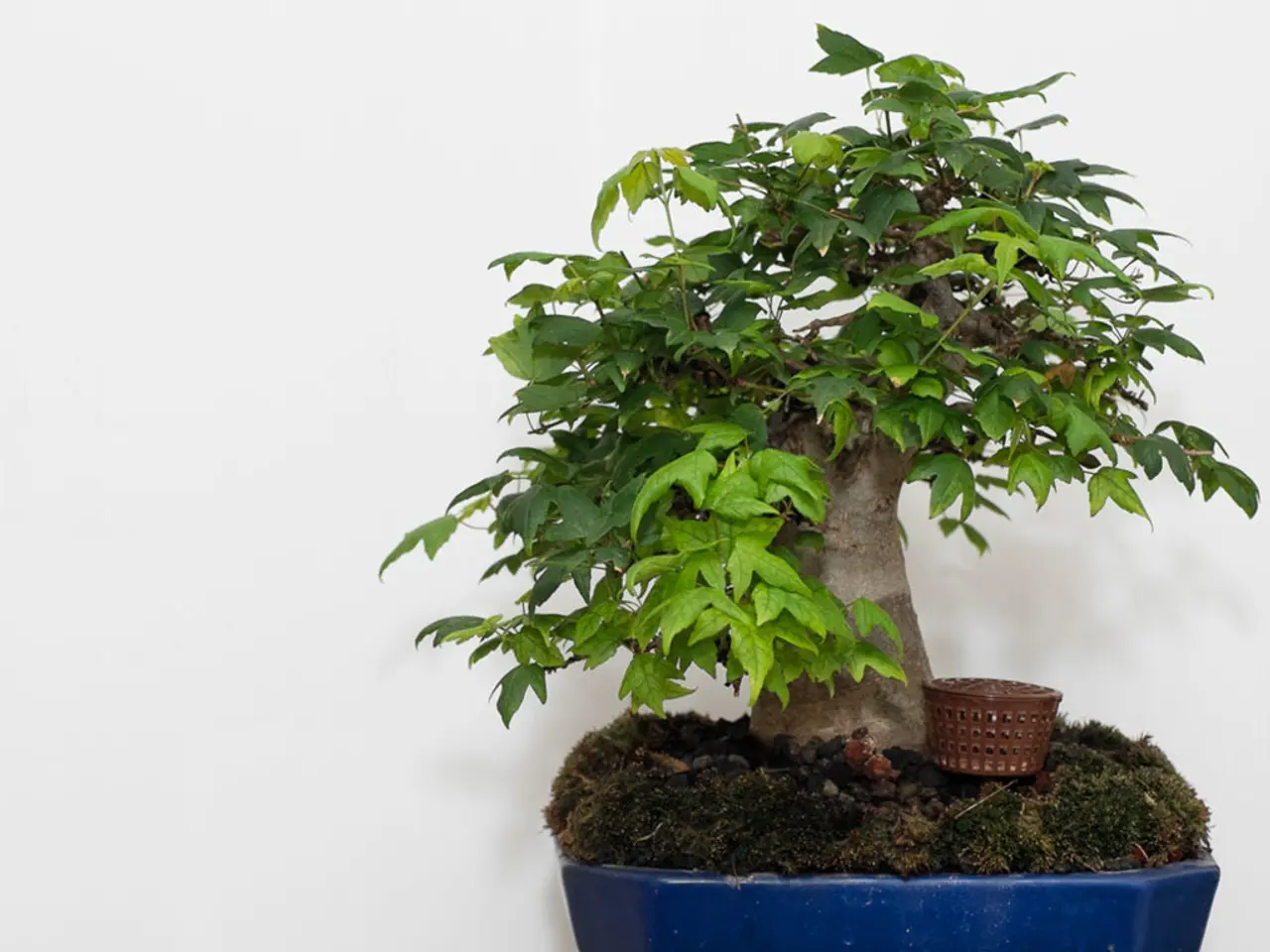Bonsai Dimensions, Planter and Stand: Deciphering the Connection
In the world of bonsai cultivation, the delicate balance of elements harmonizes to create a masterpiece of subtle nuance and refined beauty. Every detail converges to evoke a sense of serenity and contemplation, transforming the bonsai tree from mere horticulture into a work of art.
When it comes to choosing the right pot for your bonsai, achieving aesthetic compatibility and balance is key. The pot should harmonize with the tree’s proportions, complement or contrast with its foliage and bark, and create a visual equilibrium with the stand.
Size Matters
Traditional guidelines suggest the pot's length should be roughly 2/3 the height of the tree for upright styles, and its width should complement the tree’s canopy. The pot must also be large enough to accommodate a healthy root system without overwhelming the tree. Shallow pots are typical, enhancing the bonsai’s visual scale but should still allow root growth and health.
Color Harmony
The pot color should complement or contrast with the tree's foliage, bark, and overall style. Neutral earth tones like brown, beige, and terra cotta harmonize well with most trees, while darker colors like deep blue or green can enhance green foliage or create contrast. Subdued tones are preferred to avoid distracting from the bonsai itself. Flowering or deciduous bonsai with seasonal colors may benefit from pots that highlight or balance these hues.
Texture and Material
The pot’s surface texture should be consistent with the tree’s character. A rough, rustic textured pot complements rugged, aged bark or naturally styled trees, while smooth and glossy pots suit delicate or formal bonsai styles. Ceramic pots provide a more natural, breathable environment for bonsai trees, allowing for better moisture regulation and a more authentic, earthy aesthetic.
The Role of the Stand
Formal cohesion between the bonsai's shape and lines, the pot's style, and the stand's design is important for aesthetic compatibility. Wall-mounted stands can elegantly display bonsai trees, providing a sleek, space-saving solution. However, it's vital to guarantee the stand's design and material complement the tree's style, and the tree is securely fastened to prevent damage or toppling.
A harmonious relationship between the bonsai, pot, and stand is essential to craft a cohesive and visually pleasing ensemble. A stand that is mismatched in size can either overwhelm or underwhelm the delicate balance of the composition. A stand that is too large can dwarf the bonsai, diminishing its impact and creating a sense of visual dissonance. Conversely, a stand that is too small can make the bonsai appear cramped, stifling its natural beauty.
By understanding the principles of proportionality, aesthetic compatibility, and visual balance, enthusiasts can refine their skills, crafting miniature trees that showcase the art form at its finest. A well-tended bonsai tree will thrive and flourish in its container, contributing to a balanced display.
In the domain of bonsai cultivation, the triumvirate of size, pot, and stand converges to create a visually stunning composition. Clean and maintain your bonsai pots every 2-3 months to promote healthy root growth. It's possible to grow bonsai trees in pots with no drainage holes, but it's not recommended as it can lead to waterlogged soil, root rot, and tree decline.
Bonsai stands can be used outdoors in harsh weather conditions if constructed from durable, weather-resistant materials. Texture contrast between the roughness of the bonsai's bark and the smoothness of the pot and stand is important for aesthetic compatibility. A harmonious relationship between the bonsai, pot, and stand is essential to craft a cohesive and visually pleasing ensemble.
In conclusion, the best bonsai pot achieves a visual balance of form and function, ensuring the pot enhances the bonsai’s natural beauty while supporting healthy growth. Choosing a pot involves a thoughtful blend of aesthetics (size, color, texture) and horticultural needs (drainage, root space). With careful consideration and an eye for balance, you can create a bonsai display that is a testament to the art form's beauty and elegance.
- To enhance the overall presentation of a bonsai tree, it's crucial to consider the home-and-garden aspect, particularly when selecting a pot that suits the tree's style and size, and provides adequate drainage for healthy root growth.
- In choosing a pot for a bonsai, gardening enthusiasts should aim to create a cohesive and visually appealing ensemble by considering factors such as size, color harmony, texture, and the role of the stand, with the goal of portraying the bonsai as a work of art rather than mere horticulture.




